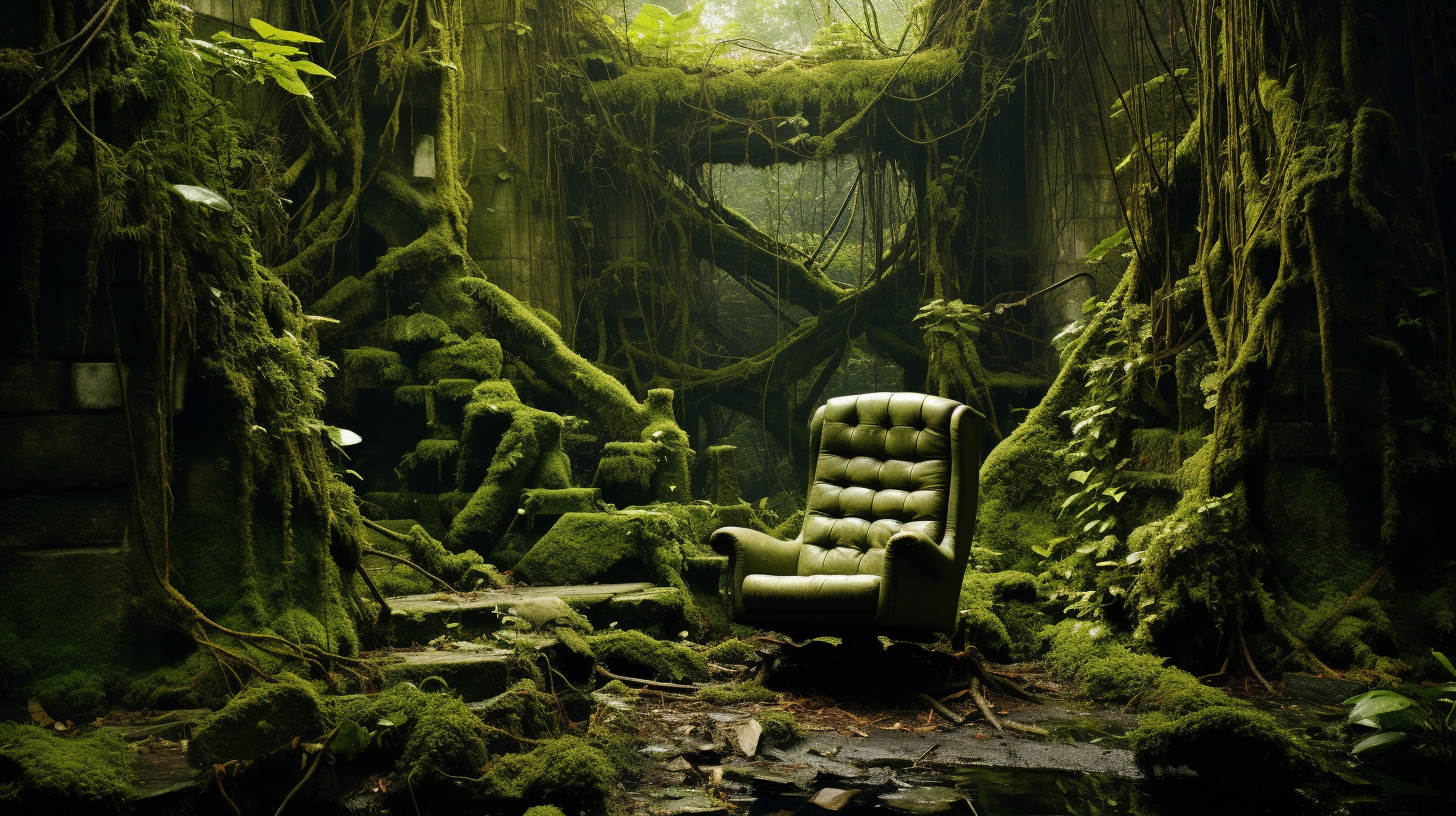In the somber shadows of crumbling concrete jungles, a verdant revolution is silently unfolding. An emerald canopy stretches over skeletal skyscrapers, entwining within the desolate wrecks of yesterday’s ambitions, a stark tableau of nature’s insurrection against the vestiges of human dominion. Whispers of Verdant Ruins – is this the epoch where nature, in her unrelenting resilience, commences her regal reclamation?
With the ceaseless cacophony of civilization now hushed, the rekindled symphony of the wild reasserts itself. Timid at first, only a faint rustle through the overgrowth, but gradually crescendoing into a venerated roar. Vines, like victorious serpents, reclaim their territory, knotting through the skeletons of cars, and the very soil itself rebels; blackened tar splits open, surrendering to the impulsive sprouts of green that prize their way through.
Wildlife, evicted long ago, commences its cautious return, navigating the ghostly aisles of this apocalyptic arboretum with a curious sense of déjà vu. Deer graze on nature’s newfound pastures, moss-gowned, where cash registers once sang; birds lay claim to the hollowed remnants of high-rise apartments, crafting nests where dreams and sleep once intertwined.
Whispers become rumors become tales; majestic trees stretch their limbs within office sanctums, whispering leafy gossips about the folly of man. Nature’s resurgence bears silent witness to a world disfigured by environmental disposal, a planet gasping amidst the maelstrom of human neglect. These verdant ruins stand as both a somber memorial and a burgeoning realm, where flora and fauna no longer dance to the tune of mankind’s reckless symphony but to the primal, ageless rhythm of the earth itself.
In the heart of urban desolation lies a lagoon, iridescent with the sheen of toxic memories, yet teeming with resilient life that knows not of the word ‘surrender’. Fish flit amongst the eerie glow of subaqueous streetlights, an accidental aquarium that defies the tales of ecological doom. Survival is not only an instinct; it is a resolute proclamation that, notwithstanding the odds, life will endure, persist, and evolve.
The somber reality is that this uprising was birthed not from a seed of hope, but from the ashes of our own making. We crafted the tinder for this burgeoning green blaze, a pyre of plastic, and carbon – and nature, inescapable and impartial, has lit the flame. These writhing botanical behemoths are eccentric eulogies, monuments to what once was and testament to the relentless tread of natural order.
As stewards of a world now slipping from our grasp, we can but wander these ruins with a voyeur’s macabre fascination. We dissect the scene— equal parts awestruck and heartbroken— witnessing an untamed world resurrected from our own neglect. Are we onlookers to a grand restoration or are we witnessing the terminal throes of a world past saving?
In this dominion where humanity’s monuments become mere footnotes to nature’s indomitable prose, we hear her whispers. Is there a lesson nestled within the vines, a riddle ensconced in the rustling leaves? Perhaps nature’s throne was never truly vacated—and these verdant ruins are the clarion call for a moribund humanity to atone in silence, to listen fervently to the whispers.
Nature’s reclaiming is neither kind nor cruel; it is dispassionate, a force beyond the petty squabbles and hubristic achievements of mankind. As we behold the greening apocalypse, we are but humble attendees at the coronation of a regal entity, eternal, just, and unmoved by human pleas. The question remains, not of when nature will ascend to her throne, but whether humanity will be present to bear witness, or if we are to be but a footnote in the annals of the earth’s grand saga.
